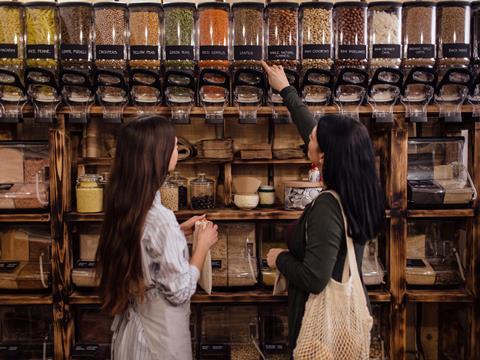
Recent reports have suggested that consumers may be turning their backs on refillable packaging. What could explain this trend? According to Robert Lilienfeld, founder and executive director of sustainable packaging think tank SPRING, the packaging industry should keep one mantra in mind: convenience is king.
Last week, I read an article from iNews entitled “Retail stores disappear as shoppers turn their backs on the zero-waste lifestyle.” Online discussions about this piece were full of fretting, hand wringing, and teeth gnashing.
Why so much surprise?
Those of us who make our living by looking to enhance sustainability should also remind ourselves that people don’t buy packages. They buy products that solve problems. Some of the problems are physical. Some are emotional. Some are lifestyle-related. And some are financial. Thus, to be successful, products must provide the right combination of functionality, variety, convenience, and cost.
Notice that I didn’t include sustainability. That’s because for the vast majority of the public, it’s an afterthought. Never mind the studies that say consumers want sustainable packaging. Of course they do! Who’s going to look bad by saying otherwise? But that doesn’t mean that it’s a significant concern, at least for most of them.
But, while consumers very often don’t do what they say they do, their behaviors don’t lie. You might remember Dr. William Rathje, the American garbologist who studied people’s trash in an effort to explain their environmental proclivities. As stated in “Seeking the Truth In Refuse,” a 1992 New York Times article about Dr. Rathje: “His past studies have shown that people will describe their behavior to satisfy cultural expectations, like the mothers in Tucson who unanimously claimed they made their baby food from scratch, but whose garbage told a very different tale.”
The reasons for the retail failure of refillables are both simple and basic. They’re inconvenient. They’re generic. They’re expensive. Just as significant is the fact that they don’t work in today’s world of e-commerce and home delivery. If people don’t go into stores, they can’t refill their containers.
There is a packaging reduction solution that takes the spirit of refillables and combines it with today’s emphasis on convenience, cost, and lifestyle demands. As in most cases, it requires a systems approach to product purchase, use, and packaging disposal:
- Market liquid products in sturdy reusable containers with easy dispensing ability.
- Sell refills, hopefully in concentrated form, in flexible packaging.
- Retail pricing of refills should be significantly lower than the cost of the initial product-and-dispenser purchase. The package itself costs less, and product concentration, of possible, also lowers the cost per use.
- Produce those flexible packages from monolayer, easy to recycle polymers.
Of course, this system isn’t perfect either. We still need to convince consumers that these flexible packages are recyclable; and help reprocessors build markets for them. These are not small tasks!
As we continue to find ways to reduce the negative impact of packaging on the environment, we should always keep in mind that while novelty may be newsworthy, convenience is king.
There’s nothing sustainable about packaging concepts that people don’t buy into. So, we need to constantly remember that our goal isn’t to find perfection, but rather, to further progress.












No comments yet